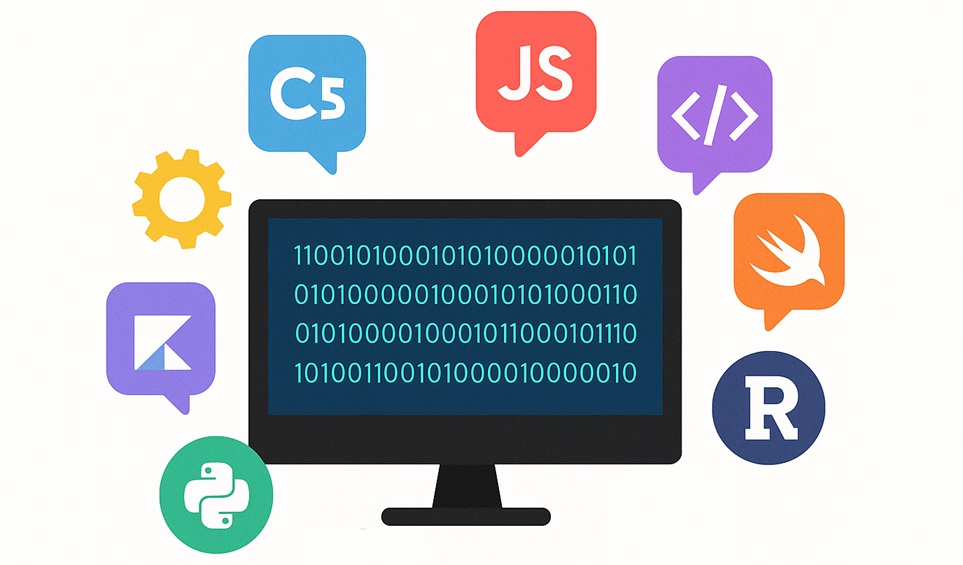In the world of Microsoft development, shapes and names change, but confusion often remains. Developers, managers, and decision-makers still ask: what is .NET Framework, what is .NET, is .NET a framework, and what is the difference between .NET and .NET Framework? Picking the wrong one can mean harder maintenance, poor performance, or unnecessary constraints down the road.
We’ll cover what .NET Framework is, how it differs from modern .NET, weigh pros and cons, and help you decide: when to use .NET vs .NET Framework. By the end, you’ll understand not just the names but the trade-offs.
What is .NET Framework?
.NET Framework is Microsoft’s older, Windows-only platform for building applications. First released in 2002, it supports languages like C# and Visual Basic, and includes functionality for creating desktop applications, web applications via ASP.NET, and windows services. It's tightly coupled to Windows, relies heavily on the Windows runtime, libraries, and APIs.
Use cases for .NET Framework include maintaining legacy systems, enterprise internal applications that are already built on it, and scenarios where components like Web Forms or Windows Communication Foundation (WCF) are essential. Developers often ask what is .NET Framework used for, and the answer generally points to applications deeply embedded in the Windows ecosystem.
Some traits of .NET Framework:
- It has a large, mature library of components that integrate well with Windows features.
- Support for GUI via Windows Forms, WPF, etc.
- Stable long-term toolset; many existing enterprise applications still rely heavily on it.
- But: updates are less frequent in terms of new features; Microsoft mostly issues patches and compatibility fixes.
What is .NET (Modern .NET / .NET Core and successors)?
“.NET” refers to the modern successor of .NET Core. It’s an open-source, cross-platform framework from Microsoft that supports Windows, Linux, and macOS. It builds on lessons from .NET Framework but brings in improved performance, container-friendly deployment, better memory management, and modern tooling.
Here’s what sets .NET apart:
- Cross-platform: you can run .NET applications on non-Windows servers or machines.
- Modern runtime and framework optimizations: better garbage collection, trimmed builds, faster start-up.
- Microservices & cloud friendliness: built-in support for Docker containers, modular architecture.
- Mobile & cross-device possibilities: via tools like Xamarin (now .NET MAUI), you can write apps that target iOS, Android, etc.
People asking what is .NET used for will point to web APIs, cloud services, console tools, microservices, cross-platform desktop apps, and increasingly, mobile. If you’re evaluating .NET vs .NET Framework, modern .NET often wins for greenfield projects and cloud-first development.
Key Differences Between .NET and .NET Framework
Here come the critical contrast points. These define why you’d pick one over the other depending on your project’s constraints.
|
Area |
Modern .NET |
.NET Framework |
|
Platform Support |
Cross-platform (Windows, Linux, macOS) |
Only Windows |
|
Open Source vs Proprietary |
Fully open source, active community contributions |
Mostly proprietary, closed ecosystem |
|
Performance & Startup |
Better optimized: faster startup, trimmed binaries, better memory usage |
Heavier runtime, slower startup in many cases |
|
Deployment Models |
Container support, microservices, cloud native |
Limited to Windows servers, IIS hosting primarily |
|
Mobile / Cross-Device |
Supports mobile via MAUI/Xamarin, etc. |
No native modern mobile support |
|
Legacy Components Support |
Some limitations: older features (Web Forms, WCF full) may require workarounds or aren’t supported |
Full support for older Microsoft tech, legacy libraries |
|
Lifecycle & Updates |
Frequent updates, feature enhancements, improvements |
More conservative; focus is on stability and compatibility rather than new features |
Advantages of .NET Over .NET Framework
If you decide to choose modern .NET, here are the advantages of .NET you’ll likely benefit from:
- Flexibility & cross-platform deployment: You’re not locked to Windows. That opens up hosting options (Linux VMs, containers).
- Performance gains: Faster response times, more efficient memory usage, sometimes smaller resource footprint.
- Modern tools & support: The CLI tooling, updated SDKs, better integration with cloud providers.
- Future-proofing: Microsoft is investing in .NET, so newer features, security patches, and performance improvements will continue.
Meanwhile, some advantages of .NET Framework remain in situations where legacy matters:
- Compatibility with older libraries, tools, or proprietary Windows components.
- Existing code base: migrating big apps is costly in time, risk, and money.
- Less need for containerization or cross-platform features if your environment is wholly Windows-based.
Potential Drawbacks and Limitations
Of course, modern .NET isn’t perfect, and .NET Framework has drawbacks despite its maturity. Here are what people often run into:
- Migration cost/time: Moving a large application from .NET Framework to .NET can involve rewriting parts, adjusting dependencies, testing issues.
- Compatibility gaps: Some legacy technologies like Web Forms, WCF full stack or certain Windows-only APIs are not supported or require alternative implementations.
- Learning curve / adjustments: Though .NET is “new,” some patterns (like cross-platform design, Docker, cloud deployment) need team learning.
And drawbacks of sticking with .NET Framework:
- Limited performance improvements and updates.
- No cross-platform flexibility.
- Less alignment with modern cloud-native architecture (microservices, containers).
When to Use .NET vs .NET Framework
So, with the similarities and differences on the table, the big question remains: when to use .NET and when to stay with .NET Framework?
When .NET Makes Sense
- Greenfield projects. If you’re starting from scratch, the choice is almost always modern .NET. Cross-platform support, active updates, and container readiness future-proof your investment.
- Cloud-native architectures. Microservices deployed in Kubernetes, Docker, or serverless functions run far better on modern .NET.
- Cross-platform needs. Applications that must run on Linux, macOS, and Windows benefit immediately.
- Mobile and multi-device scenarios. With .NET MAUI, the same codebase can extend across iOS, Android, and desktop.
- High-performance APIs. For latency-sensitive web services, .NET’s optimizations give you an edge.
When .NET Framework Still Matters
- Legacy enterprise systems. If your company has a million-line internal application built on ASP.NET Web Forms, rewriting it tomorrow is unrealistic.
- Dependency on older Microsoft stacks. Applications using WCF, Web Forms, or COM integrations often stick with .NET Framework because those aren’t fully ported.
- Low change environments. Some internal back-office apps that rarely evolve can stay on .NET Framework without risk.
In practice, many companies adopt a hybrid approach: maintain existing .NET Framework apps while building all new modules in modern .NET. This reduces migration risk while moving toward future-ready infrastructure.
The Question Everyone Asks: Is .NET a Framework?
Another point of confusion: is .NET a framework?
Technically, modern .NET is not just a framework-it’s a full development platform that includes runtime, libraries, SDKs, and tooling. By contrast, .NET Framework refers specifically to the original Windows-only framework. So, when people say “.NET Framework vs .NET,” they’re comparing the legacy Windows stack against the modern cross-platform ecosystem.
If you’re writing technical documentation, the correct phrasing is:
- .NET Framework = legacy, Windows-only framework (predecessor).
- .NET (5, 6, 7, 8, …) = the unified, cross-platform development platform.
Define .NET Framework in Simple Terms
For non-technical stakeholders, here’s a concise way to define .NET Framework:
A Windows-only software framework created by Microsoft that provides a runtime environment and libraries for building desktop apps, web apps, and services.
This simple definition helps explain why the modern .NET (sometimes just called “dotnet”) is different: it’s no longer confined to Windows, nor limited in scope.
.NET Core vs .NET Framework
Many people specifically search for the difference between .NET Core and .NET Framework. Here’s the short version:
- .NET Core was Microsoft’s cross-platform, open-source reimagining of .NET, released in 2016.
- In 2020, Microsoft unified .NET Core into “.NET 5 and later.” From this point forward, there’s only one .NET, dropping the “Core” label.
So when you see “.NET Core vs .NET Framework,” you’re essentially looking at modern cross-platform .NET versus legacy Windows-only .NET Framework.
The Latest Version of .NET
The latest version of .NET at the time of writing is .NET 8 (LTS). It includes performance boosts, native AOT compilation, improved cloud tooling, and expanded support for ARM processors.
Microsoft’s roadmap shows that new major versions will continue yearly, with long-term support (LTS) releases every two years. This cadence is another reason to move forward: .NET Framework is effectively in maintenance mode, while .NET continues to evolve.
Industry Use Cases
How do real companies approach .NET vs .NET Framework? Industry examples show clear patterns:
- Finance and Banking. Core banking systems often remain on .NET Framework for legacy compatibility, but customer-facing apps and mobile banking portals migrate to .NET for better agility.
- Healthcare. Clinical dashboards that integrate with legacy Windows hardware stay on .NET Framework, while cloud-based telehealth portals run on .NET.
- E-commerce. New storefronts and microservices overwhelmingly use .NET for scalability, containerization, and faster iteration.
- Logistics. Route optimization and API-heavy TMS platforms are built with .NET for performance and cross-platform deployment, while older warehouse systems may still run .NET Framework.
This pattern reinforces the hybrid approach: .NET for innovation, .NET Framework for legacy stability.
Migration Strategies
If you’re evaluating a shift, here’s a framework (no pun intended) to plan migration:
- Audit dependencies. Identify whether your app relies on features like Web Forms or WCF that don’t exist in modern .NET.
- Segment workloads. High-value, high-growth modules move first; stable back-office modules stay put.
- Use bridges. Some apps can run side-by-side with microservices built in .NET, reducing the need for big-bang rewrites.
- Plan for gradual adoption. Migration is a journey, not a sprint. Most enterprises take years, not months.
Conclusion
What is .NET Framework? It’s Microsoft’s legacy Windows-only runtime and library set, still running countless enterprise applications.
What is .NET? It’s the modern, open-source, cross-platform platform for building APIs, microservices, cloud applications, and mobile apps.
The difference between .NET and .NET Framework comes down to scope, flexibility, and future. Framework is static; .NET is evolving.
If your business needs to innovate, integrate cloud services, or expand beyond Windows, .NET is the clear choice. If your business depends on legacy systems that don’t justify migration cost, .NET Framework remains a valid option.
Either way, the decision should be deliberate. At TwinCore, we see both technologies daily. The key is not picking one universally, but aligning technology to strategy: modernize where it adds value, and preserve where stability matters. That’s how you get the best of both worlds.

 LinkedIn
LinkedIn
 Twitter
Twitter
 Facebook
Facebook
 Youtube
Youtube







